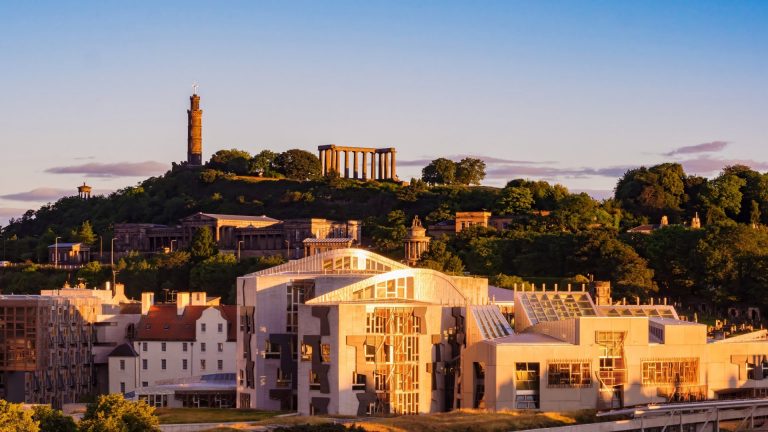We’re sure that many of you will be watching events at Westminster with fascination, as the 300-odd Conservative MPs whittle down the hopefuls to become the next party leader and therefore Prime Minister.
Whilst this has been sucking up a lot of the coverage this week, and is likely to continue to do so until we have the two contenders to go to the membership (by the time the Westminster parliament rises for the Summer recess on Thursday 21st), we thought we’d cover some of the other news items this week.
Paper 2 in the “Building a New Scotland” series published
Yesterday, we got the second in the series of papers from the Scottish Government to set out the case for independence.
This one, called “Renewing Democracy through Independence” focusses on how democracy functions in Scotland as part of the UK. Like the first paper, it points out many of the things that have not worked well and presents independence as an opportunity to do things differently.
A particular focus for the paper is the events since 2016 and the UK’s vote to leave the EU, which have exposed some of the issues with the current devolution settlement. The UK Government’s willingness to set aside the Sewel convention (where the UK Government will not “normally” legislate in devolved areas) has highlighted the fact that the UK Parliament’s sovereignty essentially trumps all else. So, despite the fact that Sewel is enshrined in the Scotland Act (along with the permanence of the Scottish Parliament), this only applies if the UK Government decides that it does.
These tensions were always likely to be a consequence of the UK’s decision to leave the EU, given the EU’s responsibilities lay in both devolved and reserved areas. As these powers in devolved areas have come back to the UK, some have been retained by the UK where others have gone to the devolved administrations. The UK is also showing more willingness to spend in devolved areas through its replacement for EU funding, which is causing more tension.
Again, like the first paper, it sets out issues with the current situation. There is less about how an independent Scotland would operate in practice in these areas. There is reference to the fact that an independent Scotland “could” have a written constitution, and this was certainly proposed in the previous prospectus. And, while pointing out some of the issues with the House of Lords, there is no clear proposal for a second chamber in an independent Scotland.
We trust that the vision for how an independent Scotland could function differently from the status quo will be set out in more detail in future papers.
Stagnation nation
Earlier in the week, at a sweaty QE II conference centre in London, our Director, Mairi Spowage, took part in an excellent event run by the Resolution Foundation. This event was to launch the interim report from their Economy in 2030 inquiry.
In the report, “Stagnation Nation”, the Foundation identify the challenges that low growth and high inequality together pose for the economy. It helpfully sets out the realities of the UK economy, both strengths and weaknesses, which are essential for policymakers to understand in order to tackle these challenges.
This enquiry will culminate with a final report next year which will set out proposals for a new economic strategy for the UK.
You can read the interim report here, and see the event here.
Interesting analysis this week
There were two releases that caught our eye this week: both because of what they show, but also because collection and interpretation of the analysis is tricky due to the pandemic.
National Records of Scotland released the mid-year population estimates for the year to June 2021, so the first estimates of how the Scottish population has changed at the national and regional level during the pandemic.
The figures suggest some redistribution of people from urban to rural areas, which reverses trends that have been seen for many years. This was put forward by many as one of the opportunities that may come from more flexible working practices, and at first glance this data would suggest this is happening.
However, the statisticians make clear that we will have to wait to see if this is actually sustained: they point to students returning to parental homes during this period (so generally out of urban areas) and people being more likely to update their GP records due to COVID vaccinations. It will be interesting to see what next year’s data tells us about whether population shifts are going back to previous trends.
Another release that got a lot of coverage this week was the analysis by End Child Poverty, looking at how child poverty rates vary across the UK by local authority or parliamentary constituency. We know from recently released data that UK poverty rates fell in 2020-21, due mainly to the temporary uplift in Universal Credit during this period. Therefore we can expect rates to increase again when we see figures for 2021-22.
This analysis shows that child poverty rates in Scotland were lower than in England and Wales, but as well as the temporary nature of the improvement in these statistics for 2020-21, there are also huge health warnings about the source data due to smaller sample sizes during the pandemic. So, another one to keep a watch on to see how it evolves into the post-lockdown period.
UK Economy back to growth
On Wednesday, the ONS published monthly GDP data for May, showing that the economy grew 0.5% during this month, after a contraction in April.
Interestingly, changes in the public sector continue to dominate the overall growth picture. The contraction in April can be tied back to the ramping down of test and trace and the COVID vaccination programme… whereas the growth in May is driven primarily by a huge increase in GP appointments in England. [1]
This masks a fall in consumer facing services during May, driven mainly by contractions in retail trade. Is this the signs of the cost of living pressures starting to bite? We’ll see when June data is published next month.
Next week — monthly inflation data
Look out for the June 2022 inflation data which will be published on Wednesday 20th – this will of course feature in next week’s update, and likely you’ll hear and see us on the radio and telly talking about the figures.
Enjoy the sunshine this weekend!
[1] As an aside, this is not to say that appointments are increasing more in England than in other parts of the UK. For some parts of the economy, particularly the metrics that are used for the public sector, ONS may use England as a proxy for the UK for growth in the short term– and this is certainly the case for measurement of health output. Just to be clear though, data for the whole of the UK is used for the annual measures.
Authors
Mairi is the Director of the Fraser of Allander Institute. Previously, she was the Deputy Chief Executive of the Scottish Fiscal Commission and the Head of National Accounts at the Scottish Government and has over a decade of experience working in different areas of statistics and analysis.
Emma Congreve is Principal Knowledge Exchange Fellow and Deputy Director at the Fraser of Allander Institute. Emma's work at the Institute is focussed on policy analysis, covering a wide range of areas of social and economic policy. Emma is an experienced economist and has previously held roles as a senior economist at the Joseph Rowntree Foundation and as an economic adviser within the Scottish Government.

David Eiser
David is Senior Knowledge Exchange Fellow at the Fraser of Allander Institute


